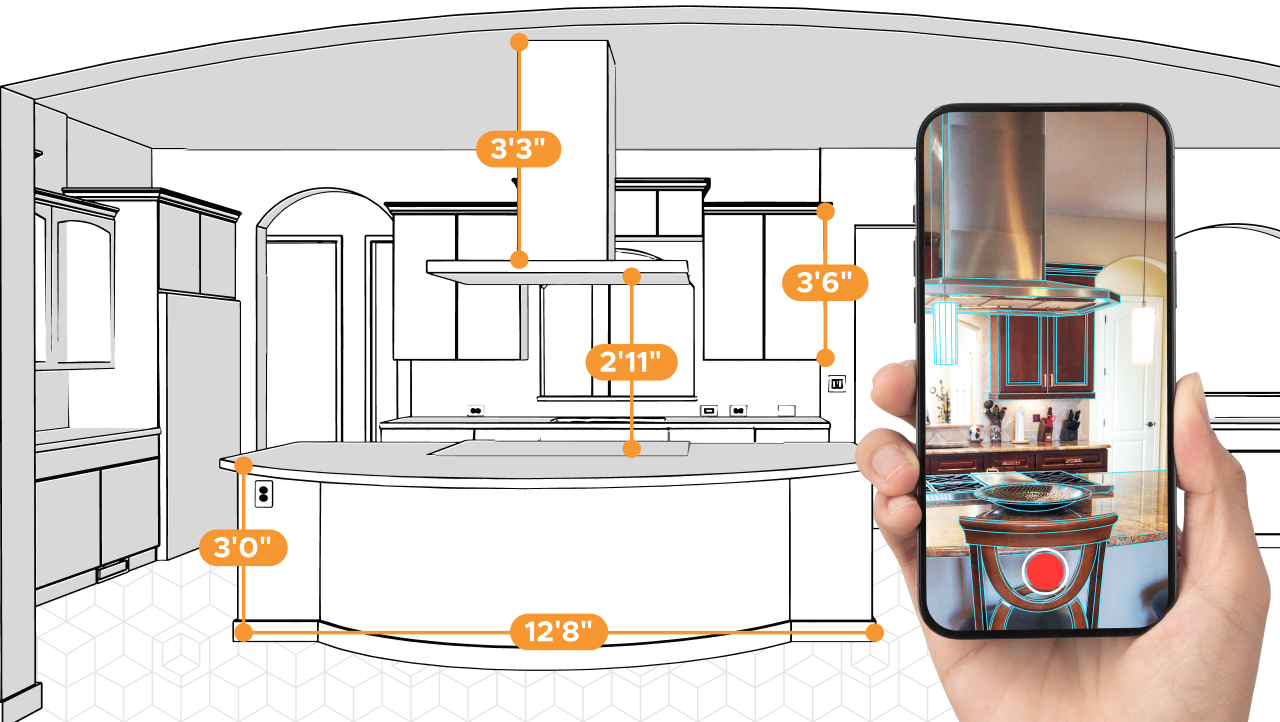Canvas is a Denver, Colorado-based software development company that leverages the latest advancements in AI and mobile-device lidar technology to make property reality capture and analysis more accessible and impactful. It aims to create a digital twin of every interior, transform it into structured data via AI, and power the full lifecycle of a property.
Canvas emerged from the computer vision company Occipital, which launched a $1 million-plus Kickstarter campaign for its structured light sensor, Structure Sensor, over a decade ago. Structure still exists, but today is focused on scanning human bodies for medical purposes.
When Apple introduced the lidar sensor on the iPad Pro and iPhone Pro in 2020, Canvas decided to support it, as it drastically reduced the friction required to use the Canvas app which captures the scan data for generating the as-built. Apple’s built-in lidar sensor is accurate enough for room scanning, and the Canvas app enables design professionals to capture spaces without investing in external hardware or having to install and calibrate it.
Canvas main products
Canvas offers two main products: Scan To CAD and Plan To CAD.
Scan To CAD is Canvas’ originating service that makes it easy to turn real-world spaces into design-ready 3D models just by scanning with an iPhone Pro or iPad Pro. The app uses lidar to capture accurate spatial data which is then processed into editable, professional-grade, layered CAD/BIM files within a few days. Canvas supports formats for SketchUp, Revit, Chief Architect, AutoCAD, 2020 Design Live, Archicad, and Vectorworks.
Plan To CAD is a new service that transforms 2D .dwg files and PDFs, into editable and organized SketchUp, Chief Architect, Revit, and AutoCAD models.

Canvas primarily serves design professionals in residential and light commercial construction and remodeling: interior designers, remodelers, architects, and design-build firms. Instead of spending hours manually measuring and modeling existing conditions, Canvas helps them skip straight to the design work.
A typical Canvas workflow starts with opening the Canvas app on an iPhone or iPad with lidar. Next, the space is scanned by simply walking around, as if you were painting the walls with your device. When finishing the scan, it is uploaded and a choice is made for the file format of the deliverable. The user receives the files within a few days, which are ready to open in the user’s preferred design software. Canvas also offers real-time previews in the app, so that users can confirm they’ve captured everything before uploading.
Scan deliverables
Canvas can produce a wide range of outputs depending on the customer’s workflow, including editable CAD models, 2D floor plans, and measurement reports:
- Editable CAD Models include SketchUp, Revit, Chief Architect, and others. These are ideal for architects, interior designers, and remodelers who need to start designing right away with an accurate existing-conditions model.
- 2D Floor Plans (PDF or .dwg files) are useful for design professionals who work in 2D or permit applications.
- Measurement Reports are helpful for estimators and contractors who need dimensions and square footage but don’t need to work in 3D.
Each of these outputs is tailored to the software that customers already use so they can slot into existing workflows without retraining or file conversion.
Use cases, pricing, and capturing large projects
Canvas is a perfect fit for residential remodels, interior design, ADUs and additions, and design-build firms. It is less of a fit for outdoor scanning, highly detailed MEP scans, and industrial or plant environments.
Canvas’ pricing is based on the square footage submitted for processing. A single scan can typically capture up to 1,500 square feet, depending on the layout of the space. For larger projects like a whole home, multi-unit building, or light commercial space, the system allows users to combine multiple scans into a single model. That way, there’s no upper limit to project size, and the user can still get a unified deliverable, even if the scanning is done in phases.






